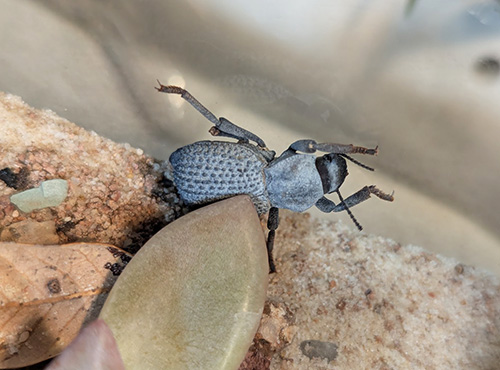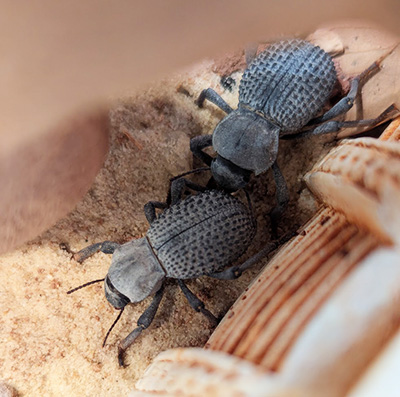Blue Death Feigning Beetles
Introduction
Asbolus verrucosus, or the blue death feigning beetle, is a species of darkling beetle (the same family as mealworm beetles) native to the southwestern United States. When threatened they feign death and can stay in this state for several hours. They get their signature blue color from a waxy coating that prevents moisture loss. Many keepers call them their blueberries! 🫐
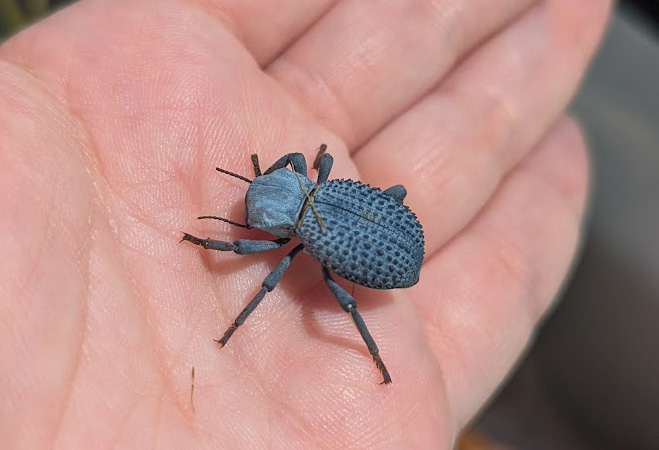
Care Tips
BDFB are very hardy and long-lived for an insect, typically 8+ years in captivity. Their standard of care is always evolving, and what is written here may change as more studies are done.
Enclosure
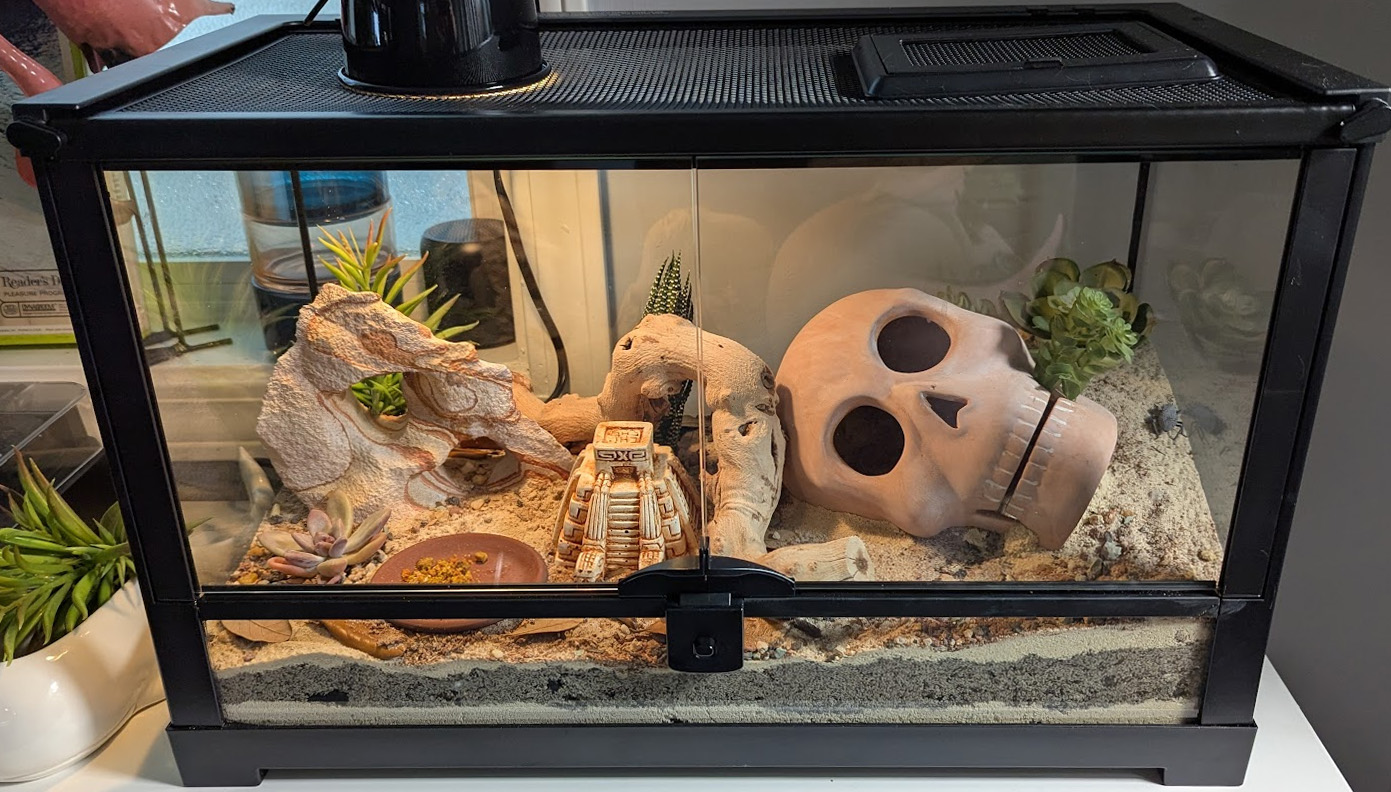
Any aquarium or terrarium will do as they cannot climb glass. Must be well ventilated.
BDFB can and should be kept in groups. The rule of thumb is 1 beetle per half-gallon. Floor space is more important than vertical space, but they will climb on things in their enclosure given the opportunity. I currently keep 4 beetles in a 10-gallon front opening terrarium. It measures 20"L x 10"W x 12"H (50.8cm x 25.4cm x 30.48cm).
Substrate
Substrate is the material on which an animal lives. While BDFB do live in arid habitats they should not be kept on sand alone. Sand is difficult to walk on, similar to how humans struggle to walk along a sandy beach. Instead, create a layered substrate. Bottom layer can be a mix of play sand and top soil, coco coir, basically anything organic. Top that off with a coarser sand: play sand mixed with small rocks, clay, bits of wood, and leaf litter. This allows the beetles to burrow into a cooler, moister layer if they want to.
Decor
You can put just about anything inside your enclosure for their enrichment. Keep in mind they can't climb smooth surfaces so textured items work best. Include several places to hide.
Real plants are great but fake plants work just as well. I have both in mine.
Temperature and Humidity
BDFB will do fine at room temperature, but if you want them to truly thrive you should provide a temperature gradient; a warm side around 85°F-90°F (29°C-32°C) and a cool side around 75°F-80°F (24°C-26°C). This can be achieved by using a heat lamp to mimic the sun.
Humidity should be kept low, around 30%.
Diet
Most care information out there will tell you that fruits and vegetables should make up most of their diet. While they will readily eat fruits, veggies, and beetle jellies, BDFB require a diet that is high in protein and low in sugar. Feeding them mostly fruit and sugary veg will significantly shorten their lifespan.
Their main source of food should be freshly killed insects, as this is what they would primarily eat in the wild. Mealworms are an easy feeder to obtain and keep. Unfortunately, you have to cut them in half or crush them before feeding (sorry little worms).
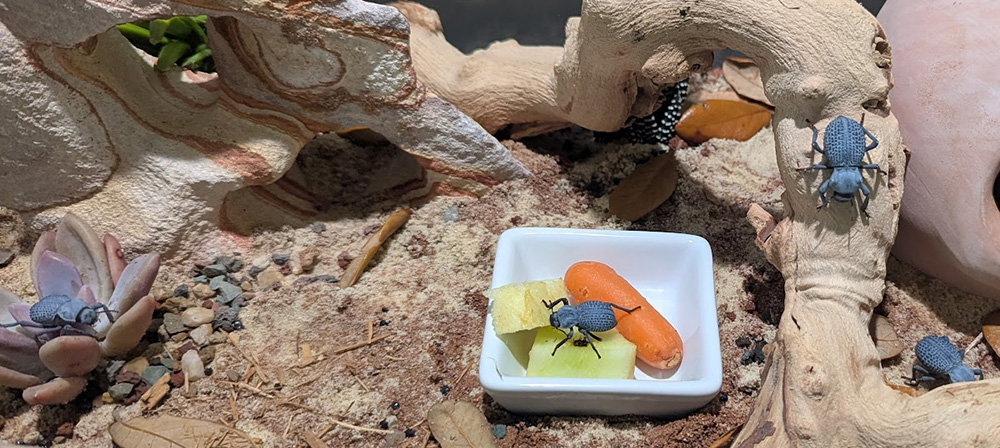
-
What I feed my beetles:
- Freshly-killed mealworms
- Unsalted/unroasted seeds
- Dried shrimp
- Goldfish flakes
- Crushed up cat food
- Baby carrots
- Lettuce, for moisture
- Sparringly: apples, green peppers, sweet potato, mango, banana
FAQ
-
Do they bite?
- It is widely reported that they do not bite, but this is absolutely not true. Speaking from persona experience, they can and will give you a nibble but it probably won't break the skin and will, at most, feel like a quick pinch.
-
Can BDFB be housed with other species?
- Most other darkling beetles, ironclad beetles, velvet ants, and desert hairy scorpions can happily live together.
-
Will they breed?
- If males and females are house together they will mate, lay eggs, and you may see larvae emerge. Getting those larvae to pupate is the real challenge, though, as they require very specific conditions. Few people have successfully bred them in captivity but it can be done. Aquarimax Pets has a whole YouTube playlist on this topic if you're interested.
